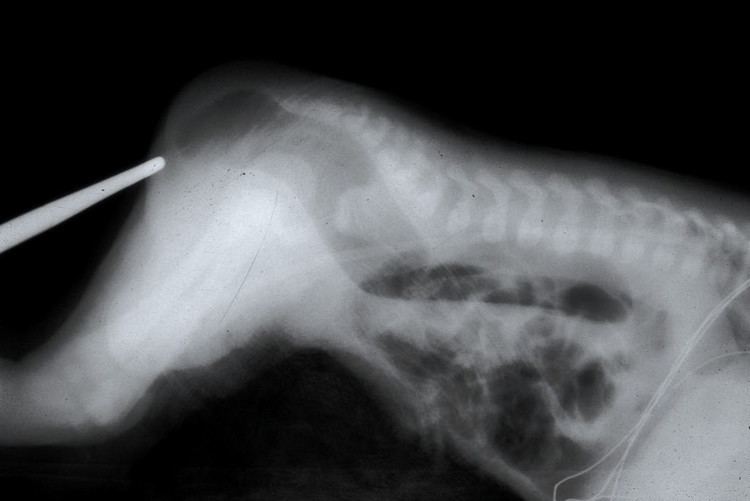OMIM 176450 | ||
 | ||
The Currarino syndrome (also Currarino triad) is an inherited congenital disorder where (1) the sacrum (the fused vertebrae forming the back of the pelvis) is not formed properly, (2) there is a mass in the presacral space in front of the sacrum, and (3) there are malformations of the anus or rectum. It can also cause an anterior meningocele or a presacral teratoma.
Presacral teratoma usually is considered to be a variant of sacrococcygeal teratoma. However, the presacral teratoma that is characteristic of the Currarino syndrome may be a distinct kind.
Genetics
The disorder is an autosomal dominant genetic trait caused by a mutation in the HLXB9 homeobox gene. In 2000 the first large series of Currarino cases was genetically screened for HLXB9 mutations, and it was shown that the gene is specifically causative for the syndrome, but not for other forms of sacral agenesis. The study was published on the American Journal of Human Genetics.
